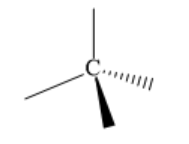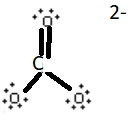Instructions: Show all your work on the space provided but put your final answers in the boxes. You may discuss the problems with classmates, but the work must be your own. 1. Predict the molecular shape of the following molecules: Methane, CH4 a. Carbonate ion, Co3²- b.
Formal Charges
Formal charges have an important role in organic chemistry since this concept helps us to know whether an atom in a molecule is neutral/bears a positive or negative charge. Even if some molecules are neutral, the atoms within that molecule need not be neutral atoms.
Polarity Of Water
In simple chemical terms, polarity refers to the separation of charges in a chemical species leading into formation of two polar ends which are positively charged end and negatively charged end. Polarity in any molecule occurs due to the differences in the electronegativities of the bonded atoms. Water, as we all know has two hydrogen atoms bonded to an oxygen atom. As oxygen is more electronegative than hydrogen thus, there exists polarity in the bonds which is why water is known as a polar solvent.
Valence Bond Theory Vbt
Valence bond theory (VBT) in simple terms explains how individual atomic orbitals with an unpaired electron each, come close to each other and overlap to form a molecular orbital giving a covalent bond. It gives a quantum mechanical approach to the formation of covalent bonds with the help of wavefunctions using attractive and repulsive energies when two atoms are brought from infinity to their internuclear distance.

1. Molecular shape:
a) : The three dimensional configuration or shape of a molecule is an important feature. The shapes are dependent and are preferred for the spatial orientation of covalent bonds to atoms which are having two or more bonding partners. The shape of the methane molecule is tetrahedron because it is hybridized. The carbon atom is place at the centre of a tetrahedron structure. Therefore each hydrogen atom is place at the corners of the tetrahedron. This will be explained by the given figure:

b) Carbonate ion:
The Lewis diagram of this will be explained as follows:
one double bond will be formed to give carbon as octet.
The carbon and oxygen are bonded through a double bond having one electron pair and two single bond of oxygens. So the molecule has 3 electron pairs and will form geometry as trigonal planar.

c) Sulfite ion:
In this sulfur atom is present at the center having one lone pair of electron. The sulfur atom and one oxygen atom are bonded with the double bond which is counted as one electron pair, due to which molecule has four pair of electrons and shape formed is tetrahedral.
So the molecular geometry formed will be trigonal pyramid.
Trending now
This is a popular solution!
Step by step
Solved in 2 steps with 2 images









